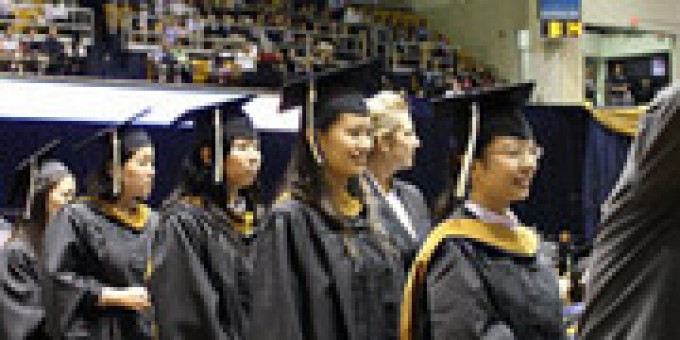
Jeremy Lin is #1 on TIME Magazine’s “100 Most Influential People in the World” list this year. As one of only a few Asian American players in the history of the NBA, the first American-born player of Chinese descent, and the first Harvard graduate to play in the league for almost 60 years, Lin has tackled many firsts, and in the process, has broken barriers. Lin splashed onto our screens in February of this year when he led the Knicks to an improbable and fantastic winning streak, generating the global phenomenon Linsanity.
As an unequivocal fan of Jeremy Lin, I’m delighted by TIME’s choice, but I can’t help but feel uneasy and ambivalent about the way the magazine described Lin’s route to success. The story says Lin achieved success the “old-fashioned way”: through hard work, humility, discipline, grit, integrity, and living and playing “the right way.” Undoubtedly, Lin works hard and is disciplined; one only needs to view his workout and training video for confirmation.
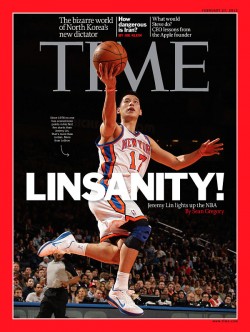
But what stands out to me is that the attributes and values used to describe Jeremy Lin’s success have also been used to describe Asian Americans’ academic achievement. Now, the cultural values of hard work, grit, and perseverance are being inscribed into the new territory of sports. This happened without raising eyebrows, because there was a ready-made “success frame” for Asian Americans in education, which was easily transferred to other domains and easily embraced by popular culture.
In an earlier TSP White Paper, I illustrated how second-generation Chinese and Vietnamese students attain high academic outcomes, even in spite of their disadvantaged class backgrounds. Chinese and Vietnamese immigrant parents and their children construct a narrow “success frame,” which is supported by ethnic resources that cut vertically across class lines, thereby making them available to both middle- and working-class ethnics. This helps to explain how the children of immigrants whose parents have only an elementary school education, who do not speak English, and work in ethnic restaurants and factories graduate as high school valedictorians, earn admission into the most competitive colleges, and pursue prestigious careers.
In this paper, I bridge the research in culture and social psychology in a useful way to provide the flip-side explanation; I illustrate how the success frame is validated and reinscribed in institutional contexts, such as schools, by those who presume that Asians are smart, disciplined, and high-achieving. While Claude Steele and his colleagues have found that African American students can suffer from “stereotype threat” (which depresses performance), I find that Asian American students can benefit from what I call a “stereotype promise”—the promise of being viewed through the lens of a positive stereotype, which can boost performance. These social psychological processes can result in what sociologist Robert K. Merton coined a “self-fulfilling prophecy”. Consequently, Asian American students—regardless of ethnicity, class, gender, and generational status—gain an advantage over their non-Asian peers in gateway institutions like schools.
Asian American Symbolic Capital
Pierre Bourdieu describes how different forms of capital (economic, cultural, and symbolic) accrue rewards, and by symbolic capital, Bourdieu refers to the resources available to an individual based on prestige or honor. In the context of U.S. schools, Asian American students’ symbolic capital benefits them in the way that their teachers perceive, treat, and grade them. The 1.5- and second-generation Chinese and Vietnamese respondents with whom we spoke consistently explained that teachers and school administrators assumed Asian students—regardless of ethnicity, class, or gender—were smart, hard-working, and high-achieving, and, importantly, they explained how these perceptions had very real consequences.For example, when our research team asked David, a 38-year-old, 1.5-generation Chinese male who now works for Microsoft, whether teachers made assumptions about his academic ability, he answered,
I think positively, just because [of] the perception that Asians, Chinese typically do better in school than the Hispanics and the Caucasians and African Americans.
Similarly, when we asked Julia, a 23-year-old, 1.5-generation Vietnamese who recently graduated from a University of California school the same question, she initially responded, “Oh, actually, I don’t know.” But after a pause, she continued,
I think just because I was Asian, I think they grouped me in that way. Because even now, when I visit the teachers, they said that we were the best in class. Because all of the Asians at our school, you know, they did well, and we broke academic records and all that.
Both David and Julia recognize that they benefited from their racial status because the top students in their high schools were Asian, generating teachers’ perceptions that all Asian students are academically exceptional and outperform their non-Asian peers, including native-born whites.
Their comments offer another important insight: that Asian Americans are compared not only to other racial/ethnic minority groups, but also to native-born whites signals the need to move beyond the “model minority” thesis—a divisive trope that pits one racial/ethnic minority group against another (typically Asian Americans against African Americans or Latinos).
The Consequences of Symbolic Capital
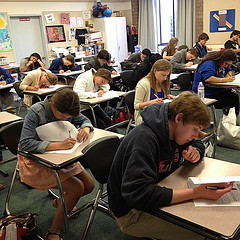
The symbolic capital afforded to Asian students has real consequences; teachers’ positive perceptions affect the grades these students receive, the extra help they are offered with coursework and college applications, and their likelihood of being placed into competitive programs like GATE (Gifted and Talented Education) and into academic tracks like Advanced Placement (AP) and Honors. This appears to be especially the case when Asian students attend racially diverse schools in which Asians are a numerical minority.
Robert’s case is illustrative. Robert is a 36-year-old who was born in Taiwan, migrated to the United States at the age of 7, and entered the second grade without speaking a word of English. However, by the third grade, he was placed into GATE. Initially skeptical, we inquired how this happened:
Interviewer: How did you get into GATE? I mean, you came here in second grade and knew no English.
Robert: They tested me, and at first they put me in ESL (English as a Second Language), and I was like, “Why am I in ESL?” Then somebody tested me again, and they said, “Well, he’s really smart.” I didn’t know what they were talking about.
Interviewer: Do you think your teachers made assumptions about your academic ability based on your ethnic background?
Robert: A lot of them thought because I was Asian—because I was one of the few Asians in my classes and stuff—they would think, “Oh well, he’s Asian, he must be smart,” or something like that. In elementary school, I was the only Asian in my class. In my whole school I think there were only two or three Asians.
What is remarkable about Robert’s placement is that he admitted that after the results of his initial test, the teachers placed him into the ESL track, but upon his mother’s insistence, he was re-tested and placed into GATE. Robert recognizes that teachers made positive assumptions about his academic ability not only because he is Asian, but also because he was one of only two or three Asians in a predominantly Latino school.
Robert’s story is not unique. Many of the 1.5- and second-generation Chinese and Vietnamese respondents we interviewed were placed in the AP track in high school, and even those who were not in AP or Honors classes were aware that this was the goal.
By contrast, relatively few of the 1.5- and second-generation Mexicans we interviewed were placed into competitive academic tracks, and many were not even sure whether AP or Honors classes had been offered in their schools. Hence, even when Chinese, Vietnamese, and Mexican students attend the same school, they can have vastly different educational experiences because of the segregation that results from academic tracking.
While some of the Chinese and Vietnamese respondents recalled that they successfully tested into the AP or Honors track, others did not remember taking an AP exam, and still others admitted that their junior high grades were not stellar, yet they were placed in high school AP courses nevertheless.
For example, Trang, a 24-year-old, second-generation Vietnamese woman, was placed into Honors classes in high school though she admits that she was not an outstanding junior high student; in fact, she recalls receiving As, Bs, and Cs in her classes. Even more surprising is that Trang has no idea why or how she was placed in Honors classes:
Trang: I think I just got tracked in actually because I don’t remember being in any Honors classes in junior high. And they just kind of put me into Honors, and I’m like, “Okay.” And it wasn’t bad, so I just kind of stuck with it.
Interviewer: Did you have to take a test or anything?
Trang: I don’t think so. I think they just stuck me in there from high school.
Once Trang was placed into the Honors track, she began taking her schoolwork more seriously, spending more time doing her homework, and studying hard for tests to keep up with her high-achieving peers. Trang graduated with a GPA above 4.0 and was admitted to all the University of California schools to which she applied.
Perhaps one of the most egregious cases of the symbolic capital accorded to Asian students is that of Angela, a 23-year-old, second-generation Vietnamese woman who described herself as “not very intelligent” and recalls nearly being held back in the second grade. By her account,
I wasn’t an exceptional student; I was a straight C student, whereas my siblings, they were quicker than I was, and they were straight A students.
Despite Angela’s mediocre grades, she adopted a success frame that mirrored that of her high-achieving coethnics:
Most Vietnamese, or just Asian people in general, emphasize academics and want their child to become a doctor or an engineer or pharmacist.
Realizing that a critical step in the success frame is getting into the AP track, Angela took the AP exam at the end of junior high school, but failed. Despite having failed, Angela was placed into the AP track in her predominantly white high school. Once there, something “just clicked,” and Angela began to excel in her classes.

When we asked, she elaborated, “I wanted to work hard and prove I was a good student,” adding, “I think the competition kind of increases your want to do better.” She graduated from high school with a 4.2 GPA and was admitted into a highly competitive pharmacy program.
While it is impossible to know how Trang and Angela’s academic performance would have differed had they stayed on the school’s “regular track,” that they were given the opportunity to meet their potential attests to the advantage that Asian students are accorded in the context of American schools.
A Self-Fulfilling Prophecy
While Angela admitted that she took schoolwork more seriously and that things “just clicked,” what is lacking in her explanation is an understanding of the social psychological processes that enhanced her performance. Turning to Merton’s classic concept of the self-fulfilling prophecy and the literature in social psychology on stereotypes provides some answers.
A self-fulfilling prophecy begins with a false definition of the situation, evoking a new behavior that makes the original false conception come true. Merton provided a number of illustrative examples of self-fulfilling prophecies in his original 1948 article, including the way in which a student’s worrying about failing can lead to failure:
Consider the case of the examination neurosis. Convinced that he is destined to fail, the anxious student devotes more time to worry than to study and then turns in a poor examination.
Merton also elucidated how self-fulfilling prophecies operate at the group level to reproduce educational inequalities:
[If] the dominant in-group believes that Negroes are inferior, and sees to it that funds for education are not “wasted on these incompetents” and then proclaims as evidence of this inferiority that Negroes have disproportionately “only” one-fifth as many college graduates as whites, one can scarcely be amazed by this transparent bit of social legerdemain.
In both Trang and Angela’s cases, self-fulfilling prophecies were at work in that the prophecies under consideration (that all Asians will achieve) are not correct, but only become so when they are favored by teachers’ high expectations, resulting in a change in the students’ behavior, and ultimately, a change in their academic outcomes.
Neither student believed at the outset that she was academically exceptional or deserving of being in the AP track (especially Angela, who earned straight Cs in junior high school and failed the AP exam). However, once anointed as exceptional and deserving, both students changed their behavior; they took school more seriously, put more time and effort into their homework, and changed the reference group by which they measured their performance, which resulted in straight As and admission to top colleges.Critically, because Trang and Angela’s outcomes matched their teachers’ expectations, the teachers can point to these students’ stellar academic achievement as proof of their initial assessment about Asian students (that they are smart, high-achieving, and deserving of being placed into the most competitive academic tracks), all the while unmindful of their role in generating a self-fulfilling prophecy.
Stereotype Threat and Stereotype Promise
What about the role of stereotypes and how they affect performance? One only needs to turn to the work of Steele and his colleagues for answers.
Steele and his colleagues have found ample evidence of “stereotype threat” in test-taking situations—the threat or the fear of performing in a certain way that would inadvertently confirm a negative stereotype of one’s group, which, in turn, depresses performance. Through various social psychological experiments, they have shown that stereotype threat depresses the performance of high-achieving African American students on difficult verbal tests as well as accomplished female math students on difficult math tests when these tests are presented as a measure of ability. They have also shown that performance improves dramatically when the “threat” is lifted—that is, when the tests are presented as problem-solving exercises rather than a measure of ability.
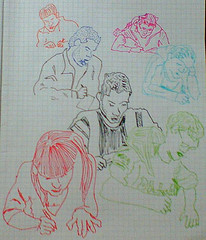
Building on the work of stereotype threat, social psychologist Margaret Shih and her colleagues have found that Asian American females who are strong in math performed better on a math test when their ethnic identity was cued and performed worse when their gender was cued (by cueing, researchers gave students questionnaires prior to taking the tests, which evoked either their gender or racial identities). They conclude that test performance is both malleable and susceptible to implicit cues—what they refer to as “stereotype susceptibility.”
Building on this literature, I conceived of “stereotype promise”: the promise of being viewed through the lens of a positive stereotype that leads one to perform in such a way that confirms the positive stereotype, thereby enhancing performance. Stereotype promise focuses more broadly on the way in which positive stereotypes can boost performance outside of controlled test-taking environments and in real world settings such as schools and workplaces. Like stereotype threat, the relationship between stereotype promise and performance may be mediated by some of the same mechanisms—anxiety and overcompensating with excess effort—but produce the reverse outcome. Other mechanisms may differ: optimistic rather than pessimistic thoughts, and high rather than low expectations.
In Trang and Angela’s cases, once they were placed in a more challenging setting, where teachers’ expectations and peer performance were elevated, they benefited from stereotype promise that resulted in their enhanced performance. Angela, in particular, admitted to feeling more anxious about keeping up with her high-achieving peers, overcompensating with more effort, and raising her expectations to match those of her teachers and peers. Stereotype promise is the social psychological process through which Trang and Angela’s exceptional academic outcomes became a self-fulfilling prophecy.
What sets stereotype promise apart from the Pygmalion effect (Robert Rosenthal and Lenore Jacobson’s finding that teachers’ expectations can influence students’ performance) is that in their study, teachers were told that certain students (who were selected at random) were “special” and had “intellectual competencies that would in due course be revealed.” After one year of the experiment, the researchers found that a higher percentage of “special” students increased their IQ by 20 points or more compared with the control group (47% vs 19%, respectively). However, unlike in Rosenthal and Jacobson’s study, neither Trang nor Angela’s teachers were told that these students had “intellectual competencies that would in due course be revealed”; instead, teachers made assumptions about Trang and Angela’s academic ability based on group-based stereotypes of Asians.Indeed, some Asian American academic outcomes are exceptional, but it is not because Asians are superior in some intrinsic sense. Teachers’ positive stereotypes of Asian students can change the behavior of even some of the most mediocre pupils, thereby constructing “Asian American exceptionalism” and reinforcing the belief that Asians are intrinsically brighter, more hard-working, and place more value on education than other groups—in short, that they achieve success “the right way.”
These examples provide a glimpse into the way social psychological processes operate in gateway institutions like schools and reinforce stereotypes about Asian Americans, which not only affect teachers’ assessments of Asian students but also Asian Americans students’ assessment of themselves. They also illustrate how inequalities are reproduced at the high end of the educational distribution—which is just as critical, yet has been given far less attention than inequalities at the low end.
The Unintended Consequences of Asian American Exceptionalism
While “Asian” is an ethnically and socioeconomically diverse category, the racialization of Asians in the United States elides these differences, and consequently, lower-achieving Asians can benefit from symbolic capital as well as stereotype promise.
Still, it’s crucial to point out that the construct of “Asian American exceptionalism” can adversely affect students by placing undue pressure on them to excel academically, resulting in feelings of abject failure if they cannot fit the narrowly defined success frame. And rather than rejecting the construct, Asian Americans are more likely to reject their racial and ethnic identities because they feel like outliers.
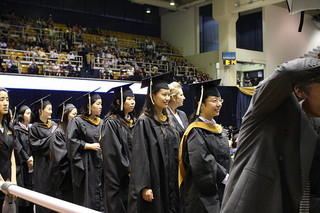
Asian American exceptionalism also disadvantages Asian American students during the university admissions process. Sociologists Thomas Espenshade and Alexandria Radford’s studyof college admissions shows that Asian Americans need a nearly perfect SAT score (1550) to have the same chance of being accepted into one of the top universities as whites who scored 1410 and African Americans who scored 1100. Moreover, whites were 3 times, Hispanics 6 times, and blacks more than 15 times as likely to be accepted at a U.S. university as Asian Americans with similar academic records, pointing to the “Asian tax” that students must pay to be admitted into the country’s elite colleges and graduate schools.
While Espenshade and Radford cannot confirm that Asian students face discrimination in the admissions process, their competitive disadvantage is not unlike the discrimination experienced by Jewish students when Ivy League schools attempted to solve “the Jew problem” by instituting quotas and other class-biased measures to restrict their admission, as Jerome Karabel revealed in The Chosen. Beginning in the 1920s, Harvard, Yale, and Princeton began requiring recommendation letters, personal interviews, essays, and descriptions of extracurricular activities, which dissuaded and disadvantaged “the wrong kind” of college applicant. Consequently, these Ivy League schools could shroud their admission process through layers of subjectivity and ultimately decrease the number of Jewish students without overtly discriminating against them.
That Asian students have to earn nearly perfect SAT scores to be admitted into elite colleges at the same rate as others whose scores are significantly lower (including white students) is a sobering reminder that even positive, seemingly benign or even complimentary, stereotypes can still be detrimental.
Recommended Reading
Pierre Bourdieu. 1984. Distinction: A Social Critique of the Judgement of Taste. A description of various forms of capital (economic, cultural, symbolic) that are privileged and reproduce class inequalities.
Thomas J. Espenshade and Alexandria Walton Radford. 2009. No Longer Separate, Not Yet Equal: Race and Class in Elite College Admission and Campus Life. A comprehensive study of the ways in which race and class impact the college application and admissions process.
Jerome Karabel. 2005. The Chosen: The Hidden History of Admission and Exclusion at Harvard, Yale, and Princeton. Reveals historically exclusionary admissions policies at Ivy League universities.
Robert K. Merton. 1948. “The Self-Fulfilling Prophecy,” The Antioch Review 8 (2): 193-210. The classic, foundational work establishing that “public definitions of a situation… become an integral part of the situation and thus affect subsequent developments.”
Cecilia L. Ridgeway. 2011. Framed by Gender: How Gender Inequality Persists in the Modern World. A path-breaking study of how the gender frame contributes to the persistence of gender inequality, even in domains that lack a history of gendered hierarchies.
Robert Rosenthal and Lenore Jacobson. 1968. Pygmalion in the Classroom: Teacher Expectation and Pupils’ Intellectual Development. New York: Holt, Rinehart and Winston. A pioneering study of how teachers’ expectations can affect students’ academic performance.
Margaret Shih, Todd L. Pittinsky, and Nalini Ambady. 1999. “Stereotype Susceptibility: Identity Salience and Shifts in Quantitative Performance.” Psychological Science 10 (1): 80-83. Shows how test performance is malleable and susceptible to stereotype cues.
Claude M. Steele and Joshua Aronson. 1995. “Stereotype Threat and the Intellectual Test Performance of African Americans.” Journal of Personality and Social Psychology 69 (5): 797-811. Explains how “stereotype threat” depresses performance among African American students.

Comments 5
Joseph Ting — October 2, 2012
Read: [The White Plight by Andrew Hacker New York Review May 10 2012].
The seemingly inexorable rise of Asian-American admissions into prestigious colleges and their economic prosperity is well borne out by United States Department of Education data showing higher student representation at Berkeley, median family incomes, college completion rates and SAT scores among Asian-Americans compared with White Americans Academic competitiveness is also evident in recently arrived and first generation Asian immigrants across advanced economies; I am a physician representative of that particular demographic in Australia. This is not surprising when academic excellence from sustained effort is so highly prized, and a strenuous study habit inculcated from early childhood, among immigrant families from the Far East and India. Hacker’s emphasis on Asian-Americans diligence and sacrifice in bringing honor to family in subsuming the mantle of academic and economic supremacy is silent on the discrimination, language and adjustment struggles facing the newly arrived. His contention neglects the diverse ethno-cultural backgrounds of Asian-Americans, among them Vietnamese, Cambodians, Hmong and Laotian communities who suffer high drop-out rates from high school and possess low socio-economic status.
On the whole, Asian-American students are thriving despite the brakes applied by race-based affirmative college admission policies which disproportionately discount their academic achievement and negatively prejudice their chances of admission into selective colleges. The National Study of College Experience led by Espenshade and Radford (2009) argued that Asian-American applicants are being held to a harsher standard than their non-Asian peers, needing SAT scores 310 and 140 points higher than those of black and White American students to secure the same chance of admission. Until the recent resurgence of Jeremy Lin, the focus on academic success meant Asians experienced substantial difficulty in expressing their talents in non-academic areas such as sports and the entertainment industry. In addition, although Asian-American college graduates are deemed competent, they remain under-represented at executive levels, susceptible to being misconstrued as technically capable followers less capable of leading with imagination.
Dr Joseph Ting
Letta Page — June 1, 2013
Sociological Images features Dr. Lee's new UC-Irvine video! http://thesocietypages.org/socimages/2013/06/01/does-positive-stereotyping-explain-asian-academic-success/
Friday Roundup: May 17, 2013 » The Editors' Desk — April 1, 2014
[…] Jennifer Lee’s provocative piece on Asian American exceptionalism and what she calls “stereotype promise“–which we are re-releasing now with […]
india's independence day — July 26, 2016
Why the first image is so low resolution?